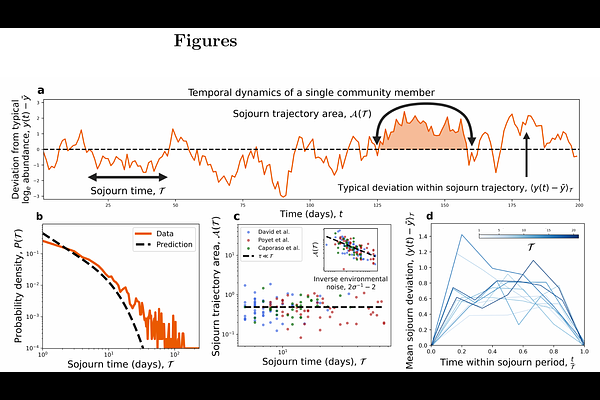The macroecological dynamics of sojourn trajectories in the human gut microbiome

The macroecological dynamics of sojourn trajectories in the human gut microbiome
Shoemaker, W. R.; Grilli, J.
AbstractThe human gut microbiome is a dynamic ecosystem. Host behaviors (e.g., diet) provide a regular source of environmental variation that induce fluctuations in the abundances of resident microbiota. Despite these displacements, microbial community members are highly resilient in that they tend to fluctuate around characteristic steady-state abundances in healthy human hosts rather than suffering extinction or dominating the community. These temporary excursions from steady-state abundances, known as sojourn trajectories, have the potential to inform our understanding of the fundamental dynamics of the microbiome, as well as how often-reported measures (e.g., mean and variance of abundance) relate to temporal dynamics and, ultimately, the timescale of growth. However, to our knowledge, the macroecology of sojourn trajectories has yet to be systematically examined in any ecological system. In this study we leverage theoretical tools from the study of random walks to characterize the duration of sojourn trajectories, their shape, and the degree that diverse community members exhibit similar qualitative and quantitative dynamics. After ruling out the contribution of stationarity, we leveraged the Stochastic Logistic Model as a theoretical lens for interpreting our empirical observations. We find that the typical timescale of a sojourn trajectory does not depend on the mean abundance of a community member (i.e., its carrying capacity), though it is strongly related to its coefficient of variation. This work provides fundamental insight into the dynamics, timescales, and fluctuations exhibited by diverse microbial communities.